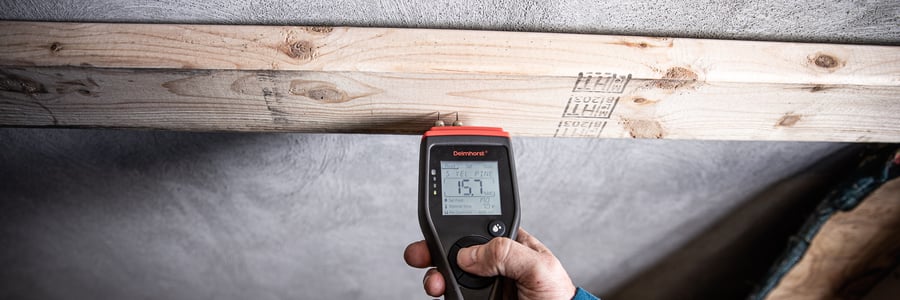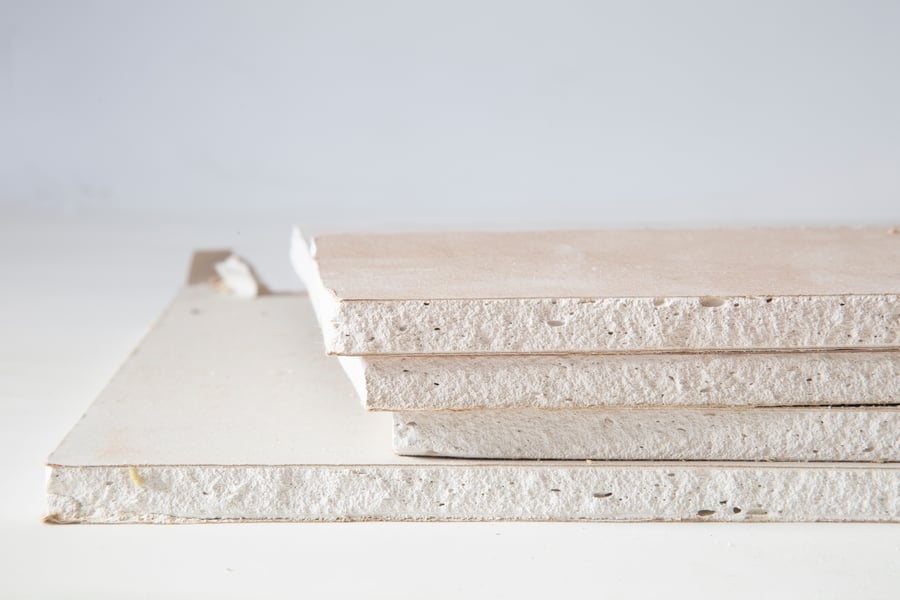Moisture Meter
Water Damage
moisture meter for water damage restoration
general contracting moisture meter
restoration experts
general contractors
Benefits of the BDX 20 & 30 Moisture Meters for Water Damage Restoration and General Contracting
.jpg)
Welcome to our second article in a six-part series highlighting specific moisture meters as essential tools for a wide range of applications. Last time, you learned about the Navigator™ JX-20 and JX-30 meters and how they're used in the lumber processing, woodworking and hardwood flooring industries. In this article, you'll see how moisture meters are put to use by water damage restoration service providers and general contractors to ensure the highest quality work is done.
The Challenges of Water Damage Restoration
After a flood or any other situation where excessive water has damaged a home or building, restoration techs need to act quickly. Understanding the extent of water damage is the first step toward successful restoration. Time is not on your side. Restoration professionals depend on moisture meters to quickly make an accurate initial assessment of water damage as well as to monitor progress throughout restoration efforts.
Moisture meters streamline the restoration process as the information provided by the meters helps you focus restoration work where it's needed the most, potentially saving thousands of dollars in repair costs. At the same time, the excess moisture left behind after a flood has cleared leaves a home or other building prone to mold, mildew, and bacteria. Contractors rely on moisture meters during and after flood cleanup and remediation work to ensure that building structures are properly dried.
Some components of a building structure can be challenging to assess for water damage, as they're in tight spaces or not well-lit. These can include:
-
Basement walls
-
Flooring
-
Building foundations
-
The space between layers of drywall and insulation
-
Surfaces beneath carpet or tile
-
Masonry
Moisture meters can be used on most parts of a structure, making them an integral element of the damage assessment process. Restoration experts and general contractors must use a high-quality moisture meter so they can be sure they're getting the most reliable readings.
How Moisture Meters Check Moisture Content
Before diving into the specifics of the moisture meters best suited for water damage restoration, let's briefly review how these meters work to provide industry professionals with critical information about the moisture content of various materials. Moisture meters use a small electrical current or an electromagnetic sensor to accurately read the moisture content of wood, drywall, and other materials. The two primary types of moisture meters are pin-type meters and pinless meters. Both effectively measure moisture content, but deciding which one to use will depend on the needs of a particular job.
Pin-Type Moisture Meter
The electrode pins in a pin-type (conductance) moisture meter are inserted directly into the material. An electrical current runs between the pins, and the resistance to that current allows the meter to calculate the moisture content.
Pinless Moisture Meter
Pinless meters (capacitance) have a sensor that's placed on the material's surface. An electromagnetic wave is used to assess the moisture level.
What is considered an acceptable or target moisture level depends on various factors, such as the climate in which the structure is located. Pros working on water restoration and flood damage repair jobs will know the equilibrium moisture content (EMC) for where they work and be able to assess when water-damaged material has returned to an appropriate moisture level.
Introducing the Navigator™ BDX-20 & BDX-30
Water damage restoration service providers and general contractors alike agree that the Navigator™ BDX-20 and BDX-30 from Delmhorst Instrument Co. are the premier moisture meters available today for this type of work. As the first meters to be released in the Navigator™ family, they both offer the impressive feature set of the BDX series, including:
-
Quantitative %MC readings - perfect for measuring moisture in wood and drywall
-
Relative readings (as relative wetness or dryness) – ideal for measuring qualitative moisture levels in concrete, plaster, and other hygroscopic building materials
The Navigator™ BDX-20 and BDX-30 work with the probes and electrodes from your previous models, making them a cost-effective purchase. Keep in mind that each application uses specific electrodes and probes. As long as you already have the correct industry-specific electrodes and probes on hand, however, you can put them to use with the BDX-20 and BDX-30.
Thanks to new developments in moisture meter design, models in the Navigator™ series are incredibly user-friendly and simple to use. The features of both BDX series models include:
-
A large, custom display with an auto backlight that's easy to read under all conditions
-
3 measurement scales: 6%-60% wood (Douglas Fir); 0.1%-6% drywall; 0-100 reference scale
-
Wood temperature correction (°F/°C)
-
Audio and visual alerts at a user-set moisture content level
-
On-screen statistics: High, Low, Average, Standard Deviation, and View All Readings
-
Internal calibration check
-
Pins/electrode correction (insulated or non-insulated)
Plus, the BDX-30 is compatible with the EDGE™ app with Bluetooth connectivity. The EDGE™ app features unlimited data storage for different readings and an expanded catalog of wood species. It also enables you to gather data collected on the meter and share it via email or spreadsheet.
As restoration work is often done in uneven lighting conditions, the large lighted displays on both the Navigator™ BDX-20 and BDX-30 make each ideal for water damage restoration. The displays feature a simple and intuitive dashboard layout that has earned the Navigator™ series a reputation as the gold standard in building trades moisture meters. Adjustable contrast and brightness features ensure the display lighting is always perfect, no matter your job site.
Next Time: Navigator™ FX-20 & FX-30
Come back soon for the third article in our series, where you'll be introduced to the Delmhorst Navigator™ FX-20 and FX-30 models and how the pros are using them. In the meantime, feel free to stop by our website for more information on the BDX-20 and BDX-30. Whenever you have questions about moisture meters, be sure to reach out to Delmhorst Instrument Co. Our team of experts is always ready to help you determine the most suitable moisture meter for your industry and application.
Subscribe to Our Blog
Post Related

Moisture Content
moisture meters
ASTM F
BDX-20
“BD-series” pin meters
Ergonomic feel
Intuitive interactive display
EDGE™ app
Adjustable brightness
Userfriendly
Wood temperature correction
BDX-30
Accessibility
Accuracy
Comfort
On-screen statistics
Technological Advances of The New Generation of Moisture Meters

